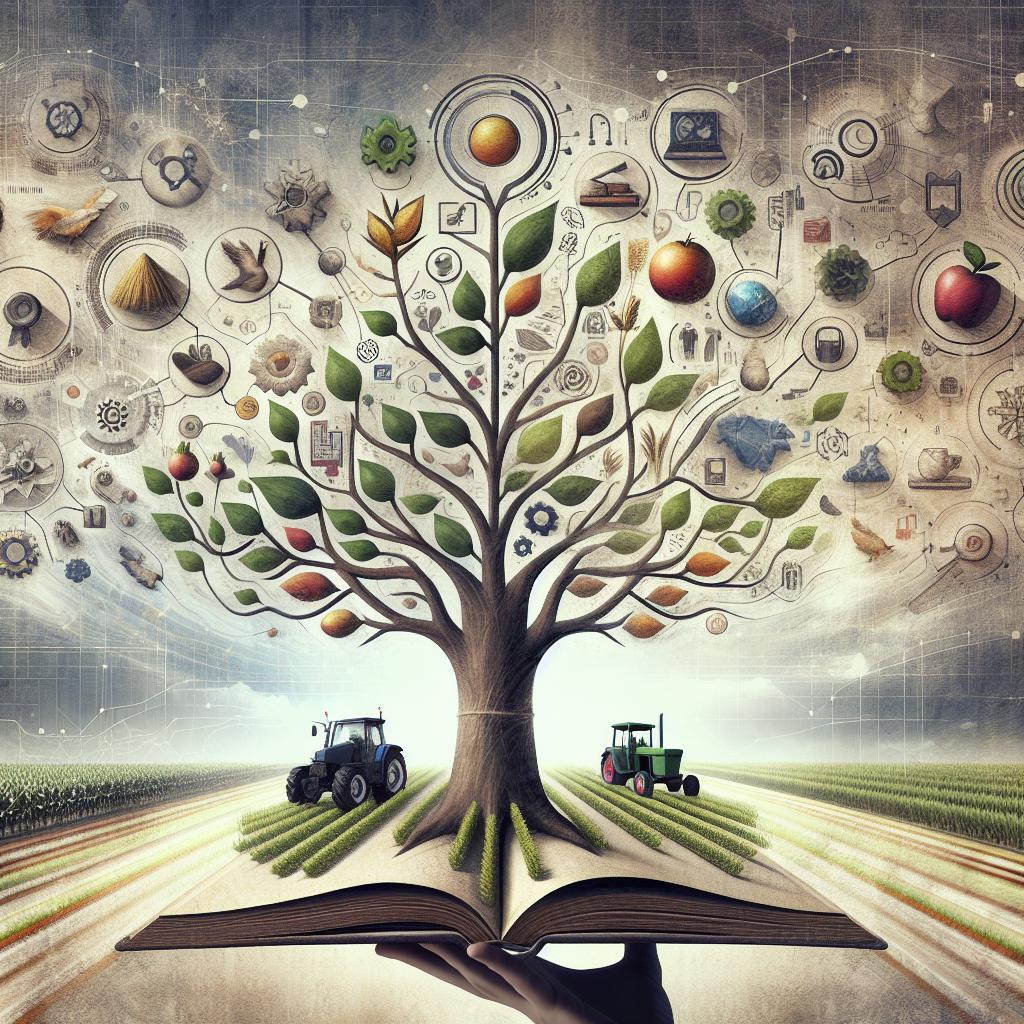This post may contain affiliate links which means I may receive a commission for purchases made through links. Learn more on my Private Policy page.
Title: Understanding the Legal and Regulatory Aspects of Farm Irrigation
As dawn breaks over sprawling fields, farmers rise to greet the day, ready to nurture their crops and sustain our communities. But behind the simple act of watering these vital plants lies a complex tapestry of legal and regulatory frameworks that shape the way irrigation is practiced. whether you’re a seasoned farmer, an aspiring agriculturalist, or simply a curious mind, understanding the legal and regulatory aspects of farm irrigation is crucial to cultivating a successful and sustainable future. From water rights and environmental regulations to local governance and best practices, navigating this landscape can seem daunting. Yet, fear not! In this kind guide, we’ll unravel the intricacies of irrigation laws, empowering you to harness the life-giving resource of water while ensuring compliance with the rules that protect our precious environment.grab your watering can,and let’s dig into the world of farm irrigation regulation together!
Navigating water Rights and Ownership: A Guide for Farmers
understanding water rights is crucial for farmers aiming to optimize their irrigation practices while remaining compliant with legal requirements. To navigate this complex landscape, it’s essential to recognise the various types of water rights. These may include:
- Riparian Rights: If your farm is adjacent to a water source, you may have the right to use that water as long as it benefits your land.
- Prior appropriation: This principle allows those who first divert water for beneficial use to claim rights to that water, regardless of their land’s proximity to the source.
- Groundwater Rights: Regulations on extracting groundwater vary widely; some jurisdictions allow unrestricted access, while others impose significant restrictions.
Additionally, navigating state and federal regulations is imperative for maintaining compliance and avoiding potential legal disputes. Here are some critical considerations:
| Regulation Type | Key Requirements |
|---|---|
| State Water Codes | Register your water rights and adhere to local usage limits. |
| Environmental Regulations | Implement practices that minimize ecological impact, such as erosion control. |
| Water Quality Standards | Ensure that water used for irrigation meets health and safety standards. |
By taking the time to understand these rights and regulations,farmers can cultivate their land sustainably while ensuring access to this vital resource.

The Intersection of Environmental Law and Sustainable Irrigation Practices
As farmers and landowners explore sustainable irrigation methods, they often find themselves navigating a complex web of environmental laws and regulations. These legal frameworks are designed to protect water resources, promote conservation, and ensure that agricultural practices do not compromise ecological health. Key components of these laws include:
- Water Rights: Understanding who has the entitlement to use water from lakes, rivers, and aquifers is crucial for sustainable irrigation. This can vary by location and be influenced by historical usage and local policies.
- Water quality Regulations: Adhering to quality standards helps prevent contamination of local water supplies,which is essential for both plant health and community safety.
- Permit and Licensing Requirements: Many jurisdictions require farmers to obtain permits for irrigation systems, ensuring compliance with environmental protection standards.
- Sustainability Initiatives: Some regions offer incentives for adopting best management practices that enhance water efficiency, further intertwining legal compliance with environmental stewardship.
moreover,the relationship between sustainable irrigation practices and environmental law is integral for creating a resilient agricultural system.Compliance with these regulations not only protects the environment but can also improve farm profitability. Implementing innovative irrigation solutions, like drip systems or rainwater harvesting, can lead to significant savings and often align with legal requirements. To illustrate this synergy, consider the following table:
| Practice | Environmental Impact | legal Consideration |
|---|---|---|
| Drip Irrigation | Reduces water waste | May qualify for water-use permits |
| Rainwater Harvesting | Minimizes runoff and erosion | Compliance with local storage regulations |
| Soil Moisture Sensors | Enhances water efficiency | Potential subsidies for technology use |

Ensuring Compliance: Key Regulations Every Farmer Should Know
Farmers must navigate a landscape of regulations that govern irrigation practices to ensure compliance and sustainable management of water resources. Understanding these laws can not only protect farmers from legal repercussions but can also enhance community relationships and foster a more sustainable agricultural environment. Key regulations include state-specific water rights, federal environmental regulations, and local zoning laws. Additionally, farmers should be aware of any water conservation mandates that might potentially be in place, which are designed to safeguard vital water supplies. Engaging with local agricultural extension offices can provide farmers with invaluable resources and assistance in understanding these requirements.
The following table highlights some essential regulations that farmers should familiarize themselves with:
| Regulation | Description |
|---|---|
| Water Rights | Defines the legal rights to use water from a source such as rivers,lakes,or groundwater. |
| Environmental Protection | Regulates the impact of irrigation practices on local ecosystems and wildlife habitats. |
| Zoning Laws | Controls land use and can affect where and how irrigation systems can be installed. |
| Conservation Programs | Encourages practices that promote efficient water use and protect water resources. |
In addition to these regulations, it is essential for farmers to stay informed about any upcoming legislative changes that may affect irrigation practices. Participating in local agricultural meetings or workshops can definitely help farmers network with peers and regulatory officials, gaining insights into the evolving landscape of agricultural law. Furthermore, leveraging technology such as water management software can not only ensure compliance but also optimize irrigation methods, leading to increased crop yield and resource conservation.

Best Practices for Securing Permits and enhancing Community Relations
Securing the necessary permits for farm irrigation can be a complex process, but establishing a clear line of communication with local authorities can greatly enhance your likelihood of success. Begin by researching local regulations and understanding the specific requirements for irrigation permits in your area. engaging with community officials early on can help identify any potential concerns and streamline the approval process.Consider scheduling informational meetings where stakeholders can share their thoughts and you can present your plans, showing that you value their input.
Building positive relationships with the community is equally essential. By actively involving local residents and organizations, you foster goodwill and clarity. Here are some key strategies to enhance community relations:
- Host open forums: Create opportunities for the community to voice their concerns and learn about your farming initiatives.
- Share your vision: Clearly articulate the benefits of your irrigation project, including environmental and economic advantages.
- Encourage collaboration: Partner with local groups to showcase your commitment to sustainable practices and community welfare.
| Community engagement Activity | Benefits |
|---|---|
| Informational Workshops | Educates community and addresses concerns |
| Feedback Surveys | Gathers opinions and enhances trust |
| Community Sponsorship | boosts local support and visibility |
To Wrap It Up
As we wrap up our journey through the intricate landscape of farm irrigation law and regulation,it’s clear that managing water resources effectively requires more than just a reliable system of pipes and pumps. It demands a keen understanding of the legal frameworks that shape our agricultural practices.From state regulations to federal guidelines, these laws not only protect our vital water supply but also ensure sustainable farming for generations to come.
Remember, each farm is unique, much like the regulations that apply to it. Staying informed is your best ally in navigating this ever-evolving terrain. So, whether you’re a seasoned farmer or a budding agripreneur, embrace the challenge with open arms and a curious mind.
By fostering good relationships with regulatory bodies and remaining proactive about compliance, you can cultivate a thriving farm that respects both the land and the water it draws upon. Here’s to fruitful harvests and sustainable practices in the seasons ahead! Happy farming!
This post may contain affiliate links which means I may receive a commission for purchases made through links. Learn more on my Private Policy page.

